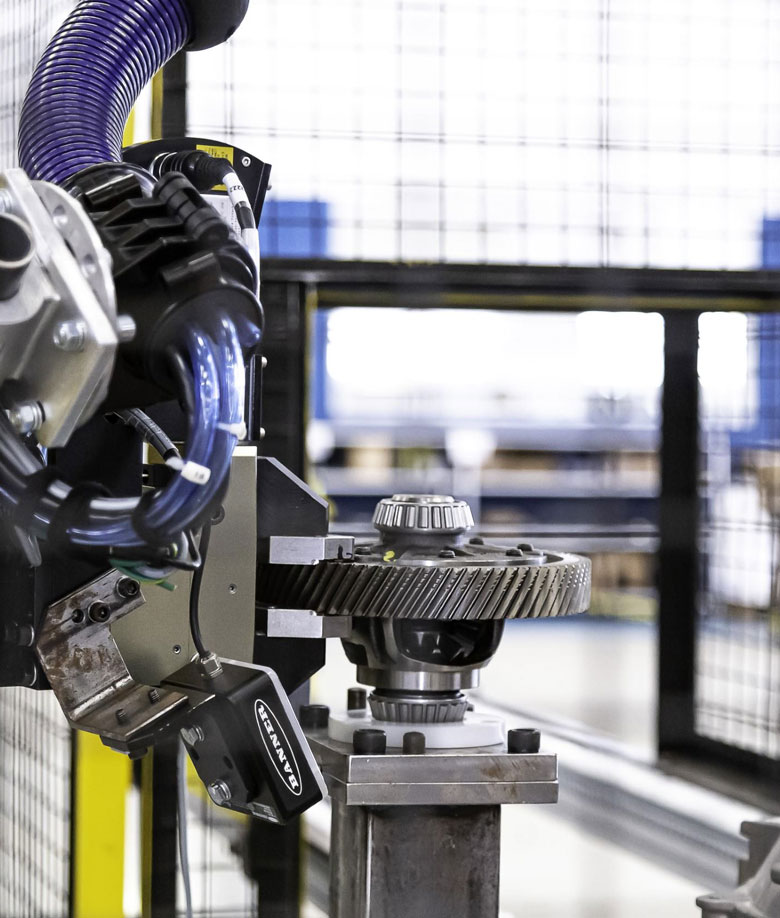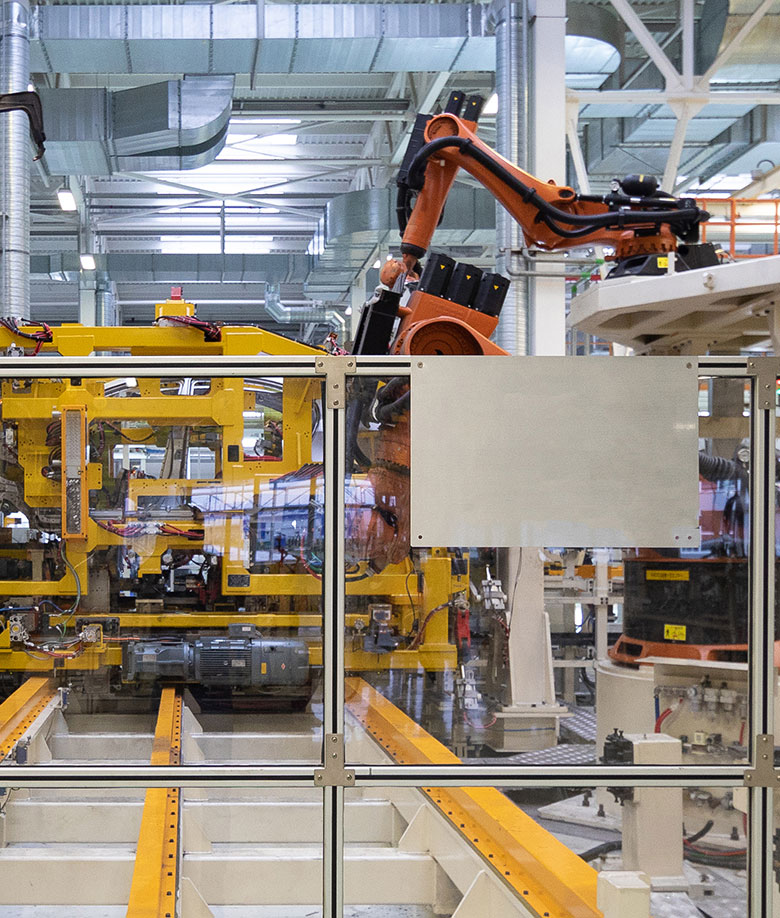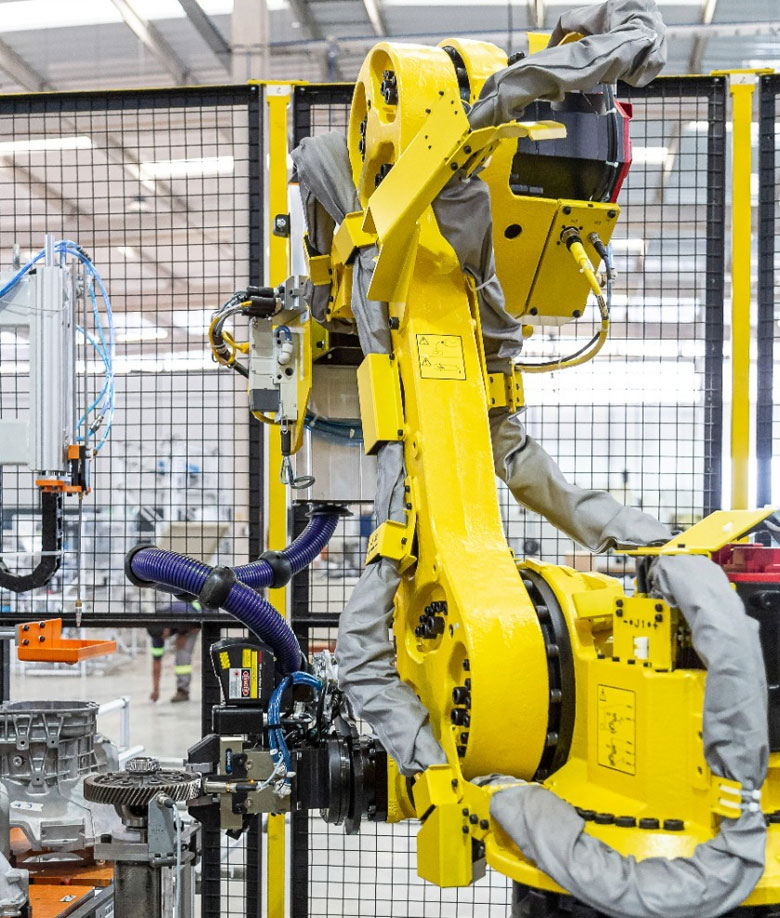All about industrial automation
Industrial automation can be defined as the application of software technologies, hardware and specific equipment in productive industrial processes.
Its main purposes are to optimize the control tasks of the mechanisms and implement projects that are able to increase the autonomy of the manufacturing processes through equipment and industrial machines and, consequently, reduce possible human efforts that are spent in the execution of certain activities within an operation.
It can also be considered the replacement of manual work by mechanical tasks. However, this is not to say that machines will replace people's jobs.
Currently, it is a concept intrinsically linked to Industry 4.0, which encompasses Cyber-Physical Systems, Internet of Things and Cloud Computing to create “smart factories”, with asset monitoring in addition to automation and control.
With technological advances and Industry 4.0, automation has become an essential project for industries that want to increase their productivity and remain highly competitive in the market.

4.0 Industry
Concepts and definition
The term “4.0 Industry” appeared in 2011, at a fair in Hannover, Germany. Such a concept was presented to the public from a strong incentive from the German government to propose a change in relation to the way factories used to operate and operate (there are still active factories with old business thoughts). This initiative was supported by technology companies, universities and several research centers.
The concept is based on decentralizing the control of production processes, using technology and automation as a way of connecting all the operation's processes. This with the purpose of increasing the production of the business and still reducing its costs.
The most prevalent feature of the smart industry is the interconnectivity of the entire operation. In other words, the equipment communicates with each other, causing a high capacity and speed in the exchange of information between them and the central.
What are the main goals of industrial automation
One of the main objectives of automation is to improve the results of industries, through more qualified production processes at lower costs. However, in addition to this, there are other very important goals.
- Increase industrial production, based on greater production capacity;
- Offer more safety, avoiding dangerous work and, consequently, that serious accidents occur with employees;
- Improve the availability of industrial equipment;
- Carry out activities that are difficult for people to perform;
- Simplify industrial machinery maintenance processes;
- Increase industrial production, based on greater production capacity;
- Offer more safety, avoiding dangerous work and, consequently, that serious accidents occur with employees;
- Improve the availability of industrial equipment;
- Carry out activities that are difficult for people to perform;
- Simplify industrial machinery maintenance processes;
Benefits of industrial automation
The automation of production processes can be more economically viable for several reasons, one of which is related to the quality standard, since automated systems provide more qualitative excellence, since the machines are designed to conduct the processes under strict control standards, that is, it enables the development of more efficient products, as devices maintain high production standards and fail less.
In addition, energy resources and raw materials can be better used, considering that automation allows working with a focus on zero waste.
It is also undeniable that the implementation of automated systems makes industrial processes more flexible, both in terms of production capacity and the possibility of changes in manufacturing parameters and product specificities.

In addition, it provides more precision and technical safety in activities that are considered unhealthy and dangerous, ensuring the viability of these highly complex operations, which could never be performed by manual methods.
• OPTIMIZED MONITORING
Through a series of sensors installed in the industry's operating area, various information related to its production activities is captured and sent to a software.
The system, in turn, has the prerogative of filtering the information and sending it, in an intuitive way, to the management team, who can make use of it in the decision-making process.
• ERROR REDUCTION
The collaborators of an industry are limited by physical factors that can reduce their efficiency and, in certain cases, lead them to make mistakes. In this context, the automation system emerges as an effective solution.
This is because the integration between advanced software and sensitive sensors allows the machine to operate autonomously, following previously programmed guidelines.
The sensors are responsible for sending information to the program about the state of the machine in question, which supports the operation of the system.
In this new scenario, it is up to the human collaborator to monitor the software, in order to ensure that it is actually operating according to the established criteria.
• INTEGRATION OF OPERATIONS
As the adhesion of factories and companies to the concept of Industry 4.0 increases, communication between businesses tends to become more efficient, as it will begin to be done through specialized systems.
In this way, an integration between a company, its suppliers and customers tends to happen, which makes room for the possibility of negotiations to become faster and less costly.

What are the segments that industrial automation can be applied to?
Automation can be applied in basically all industrial segments that have a productive operation with motors, driven machines or gearboxes.
However, it is important to understand that automation can be classified into two types: discrete process control and continuous process control. The first is a process whose execution is carried out in stages and is used by batch manufacturing industries and assembly lines. In the second, the operation is carried out uninterruptedly, in order to guarantee the largest possible volume of final product, and is very common in chemical, food and metallurgical industries.
Below are some examples of machines and processes that
can be automated in different industrial segments:
• PAPER AND PULP INDUSTRY
In the pulp and paper industry, it is very common to automate machines and processes related to wood cutting and debarking, bleaching and packaging (labels, seals, etc).
• MINING INDUSTRY
Mining companies often automate processes related to ore crushing, railcar loading and packaging.
• CHEMICAL INDUSTRY
The automation of the chemical industry is based on tasks such as the dosage of products for mixtures, effluent treatment stations, pH control and packaging.
Generally, all productive activities that require some type of motor or gearbox for their operation can be automated through the monitor.
In addition to these industrial segments, it is important to highlight that automation can be applied in different areas of an industry and not only in production and operation. The following are some other sectors in which it can be applied: Inventory, marketing area, human resources, financial area, commercial area.
Principles of industrial automation
For the operation and understanding of automation, it is important to understand the principles that constitute this service.
• Interoperability: the ability to communicate clearly and precisely between machines and employees through technologies such as the internet of things and cloud computing.
• Decentralization: little human interference for decision-making. That is, the machines notify the problems and failures that the equipment suffers in an operation to the central, through the combination of sensors and artificial intelligence applications in a software that is able to monitor the operation of the industry. Thus, employees only need to analyze the available indicator data and the information that has been sent, and make decisions according to production needs.

• Virtualization: virtual simulations of the industrial environment are created by interconnected data sensors, allowing to remotely track and monitor all the physical processes of the factory, which allows the design of industries to become much more efficient, after all, errors and risk factors can be easily identified at this stage of the process.
• Modularity: ability to adapt production flexibly according to the expansion, replacement, removal or mutation of modules.
• Service orientation: service availability through cloud computing.
• Real-time capacity: the data and information sent and collected at the central are generated and analyzed in real time, based on the productive objectives that the industry has.
• Asset monitoring principle: From industrial automation, it is possible to remotely track and analyze the performance of the entire operation, using sensors that are placed on industrial equipment.
To ensure the synergy between all these principles, industrial automation integrates three areas: electronics, which is in charge of the architecture and implementation of hardware; mechanics, which includes actuating devices; and information technology, which encompasses the system's control software.


